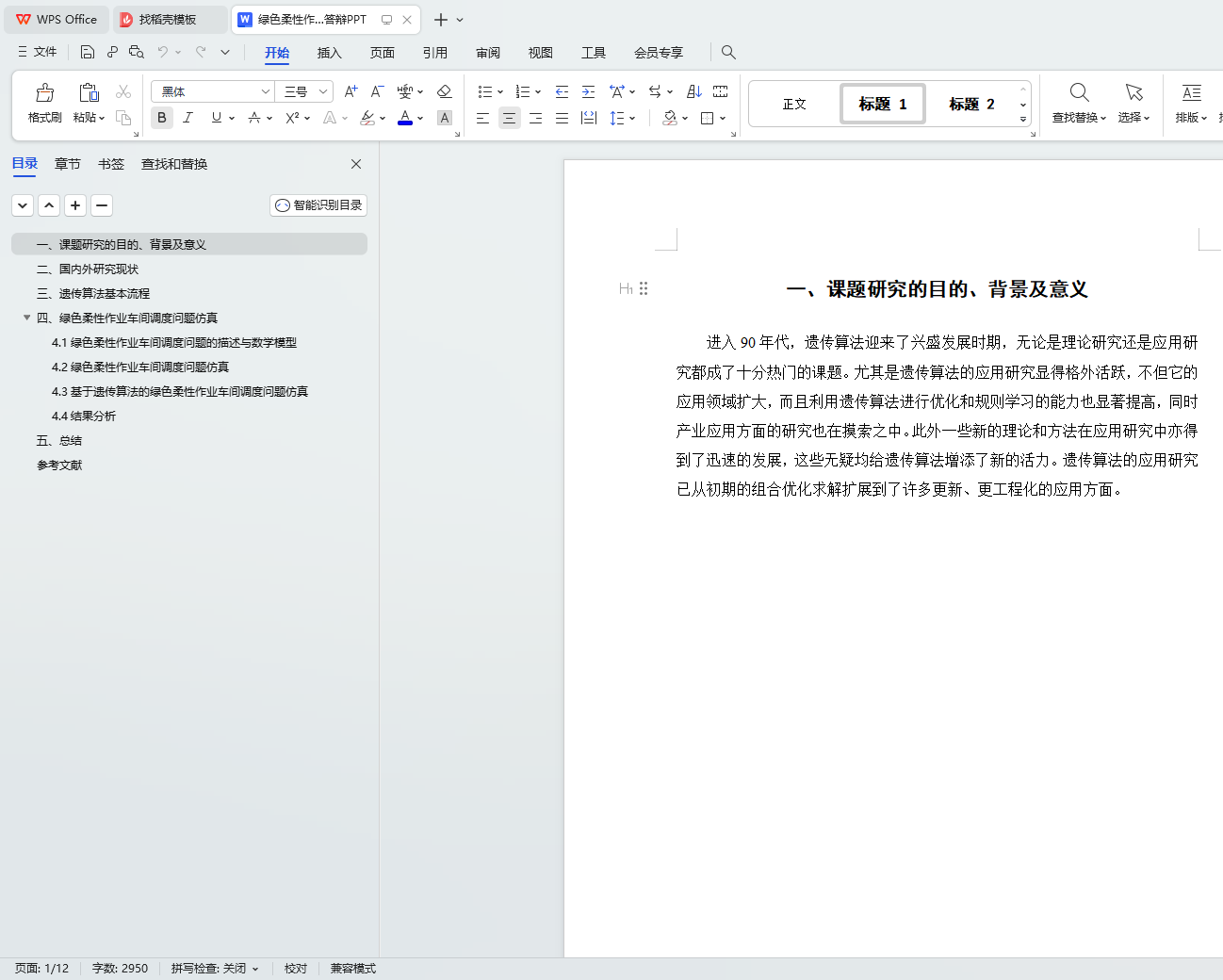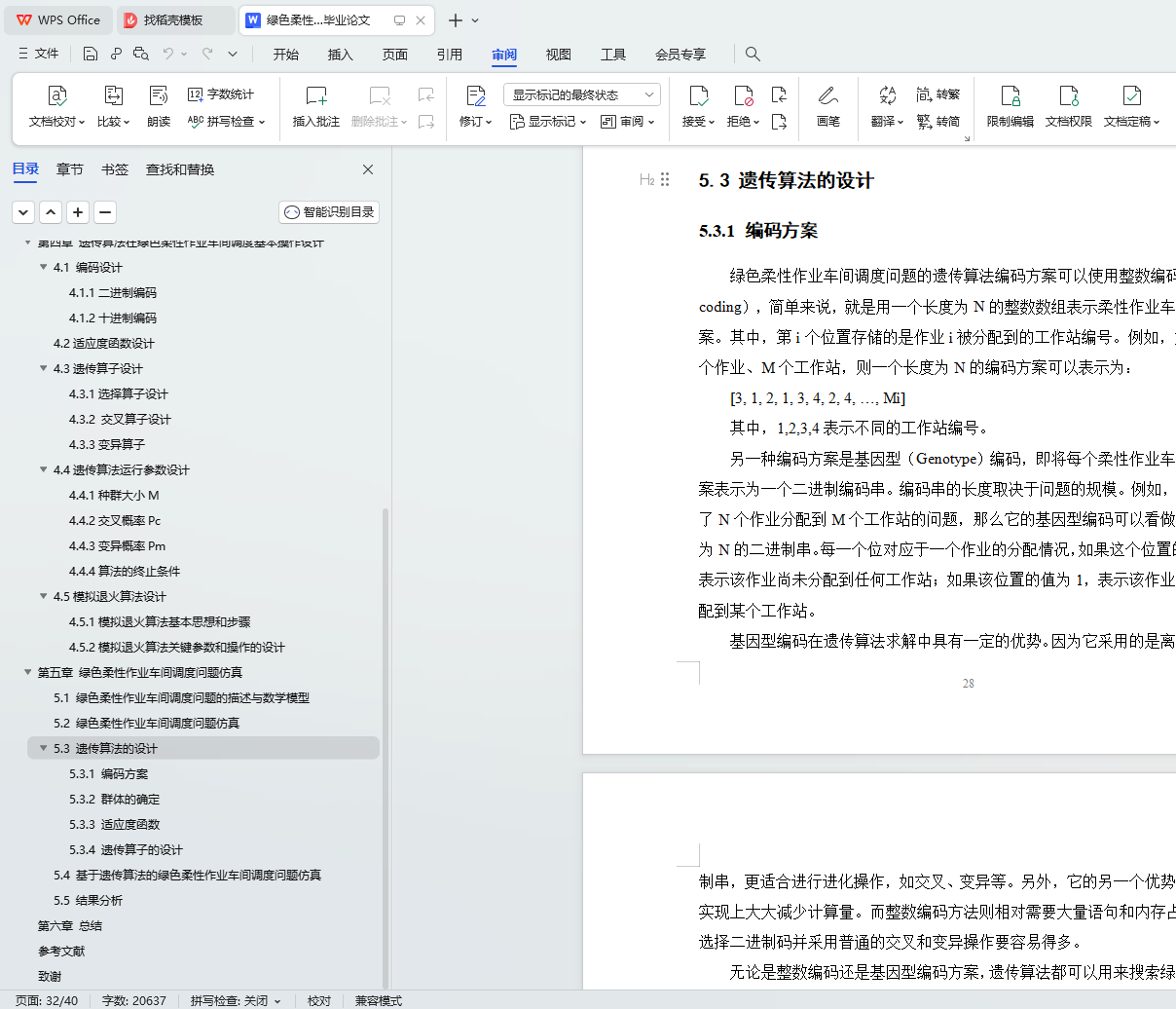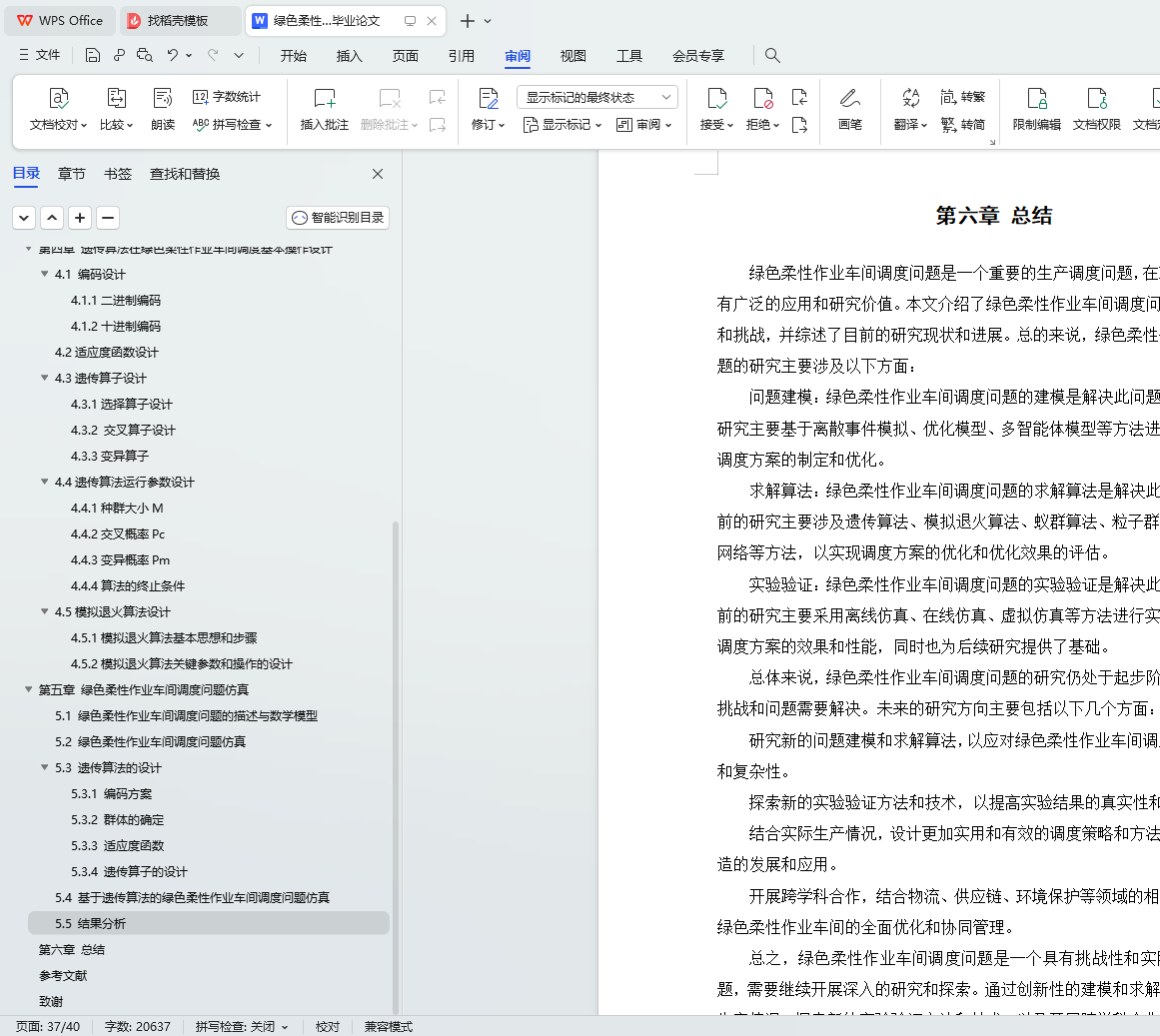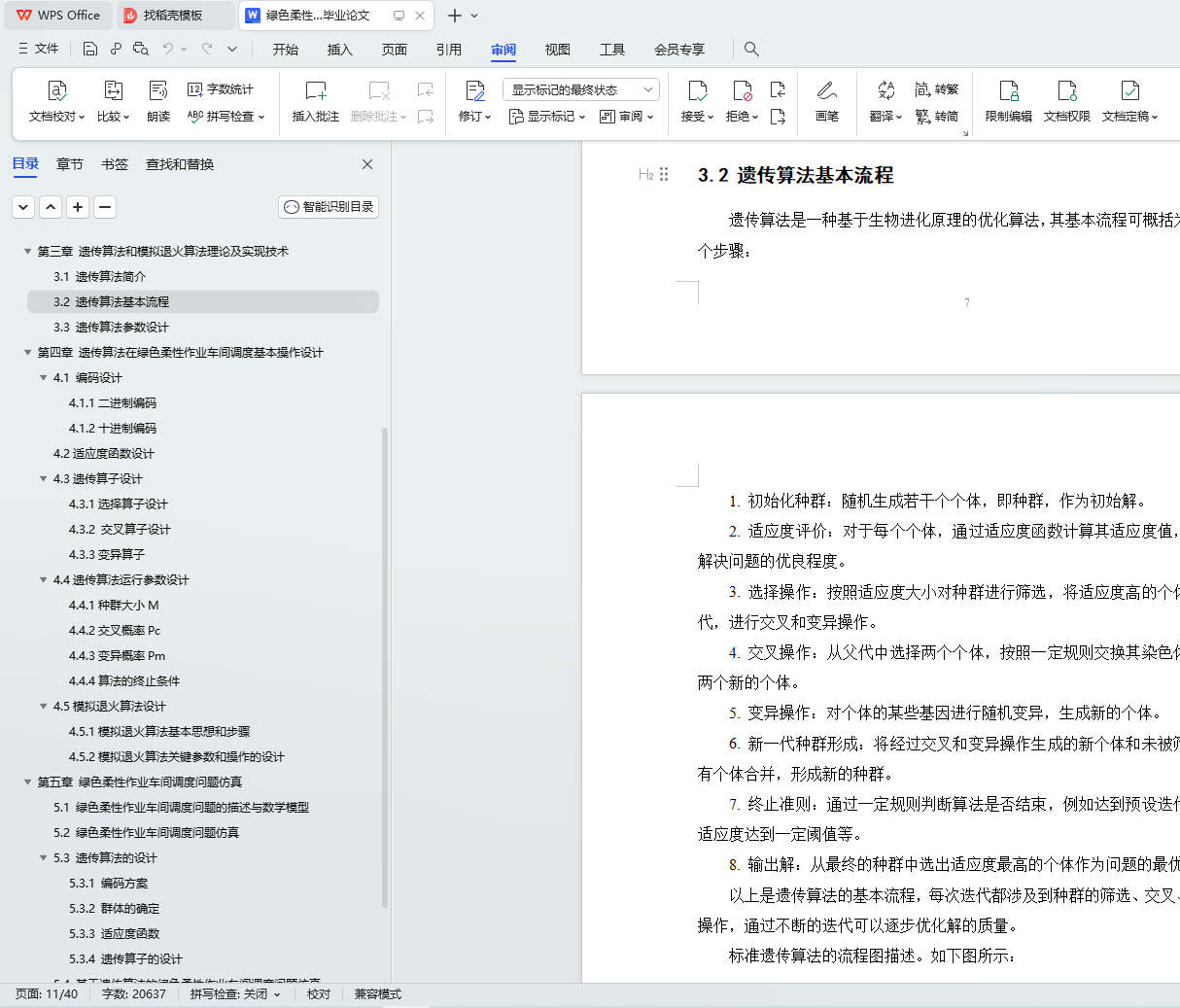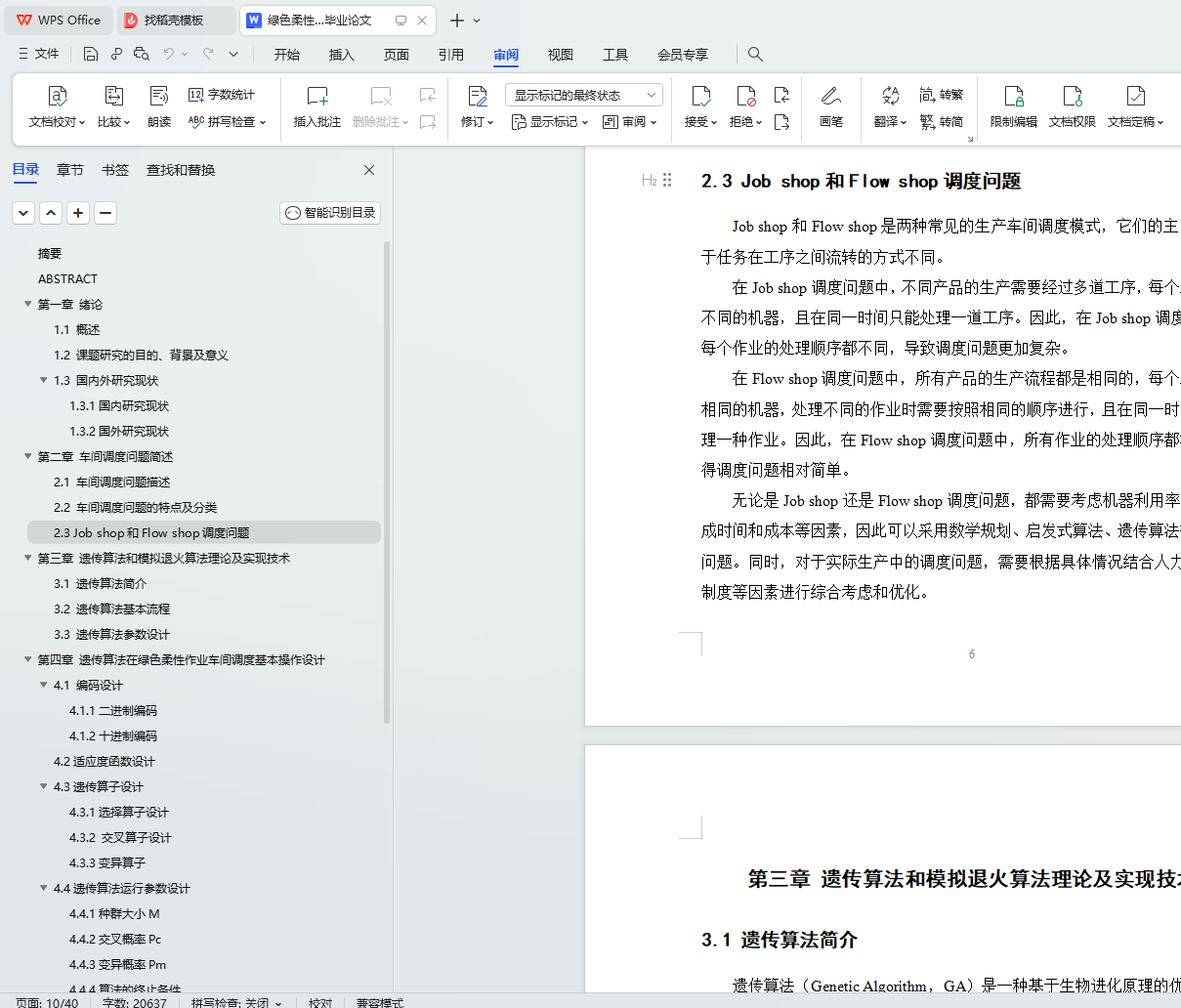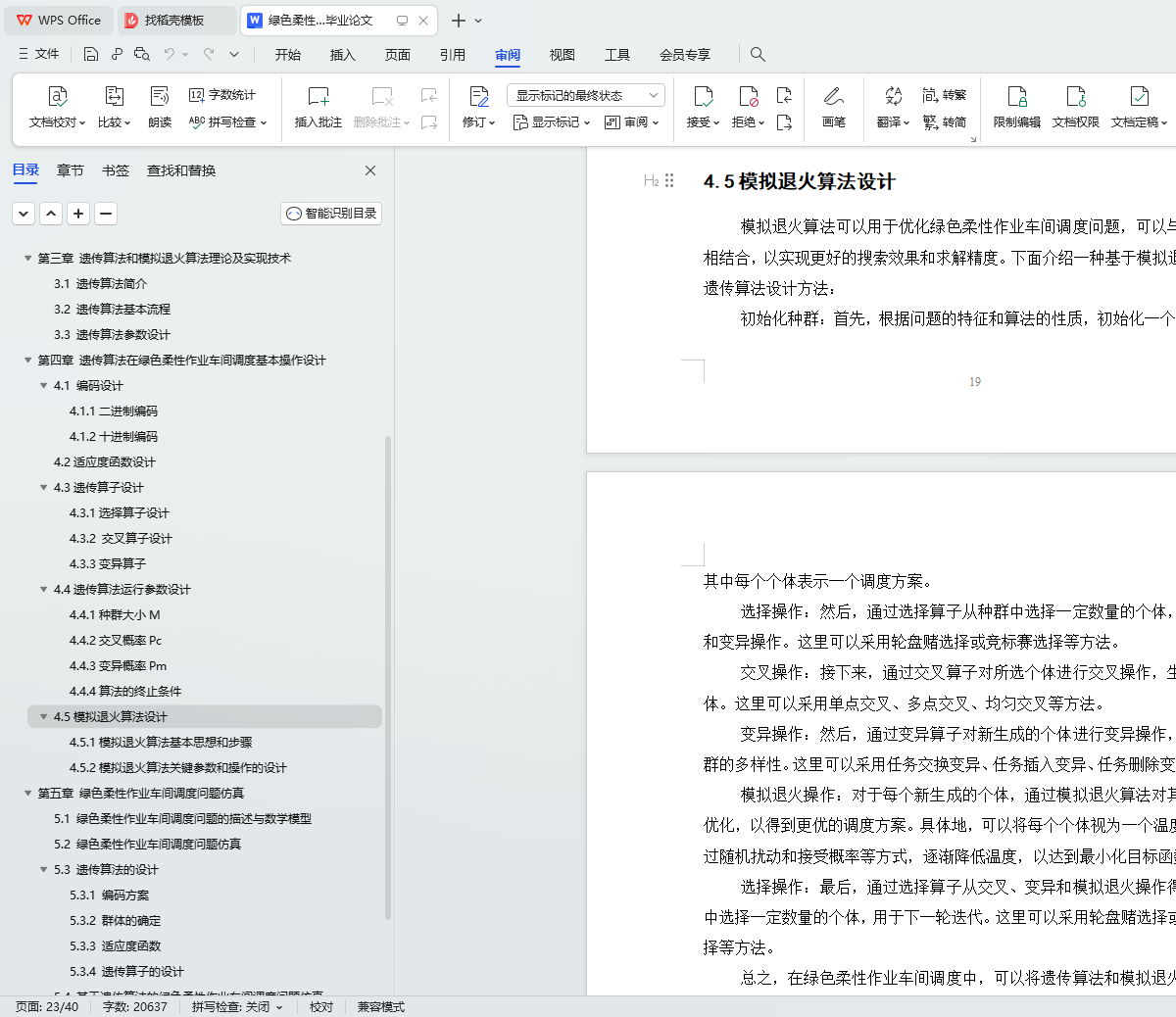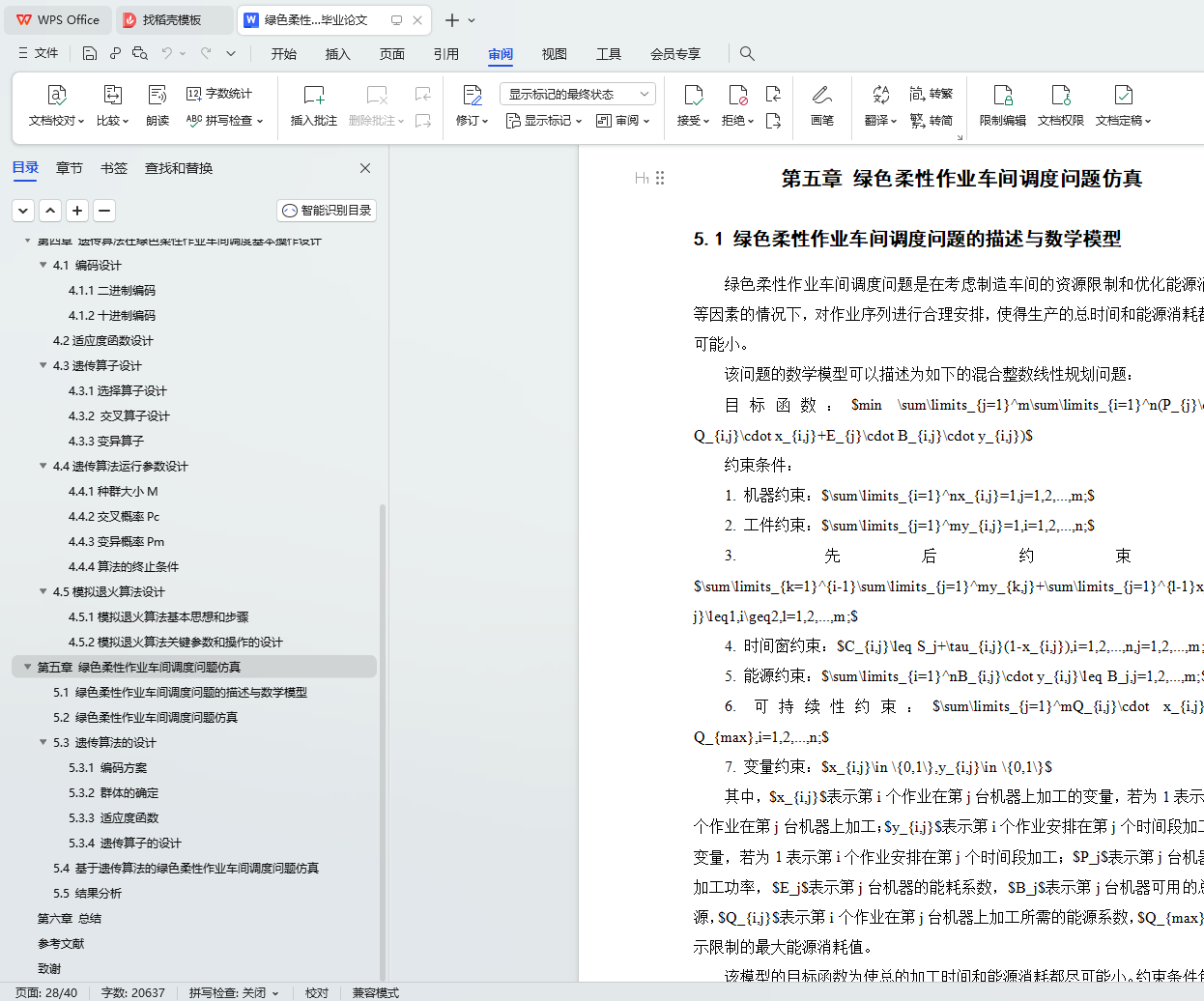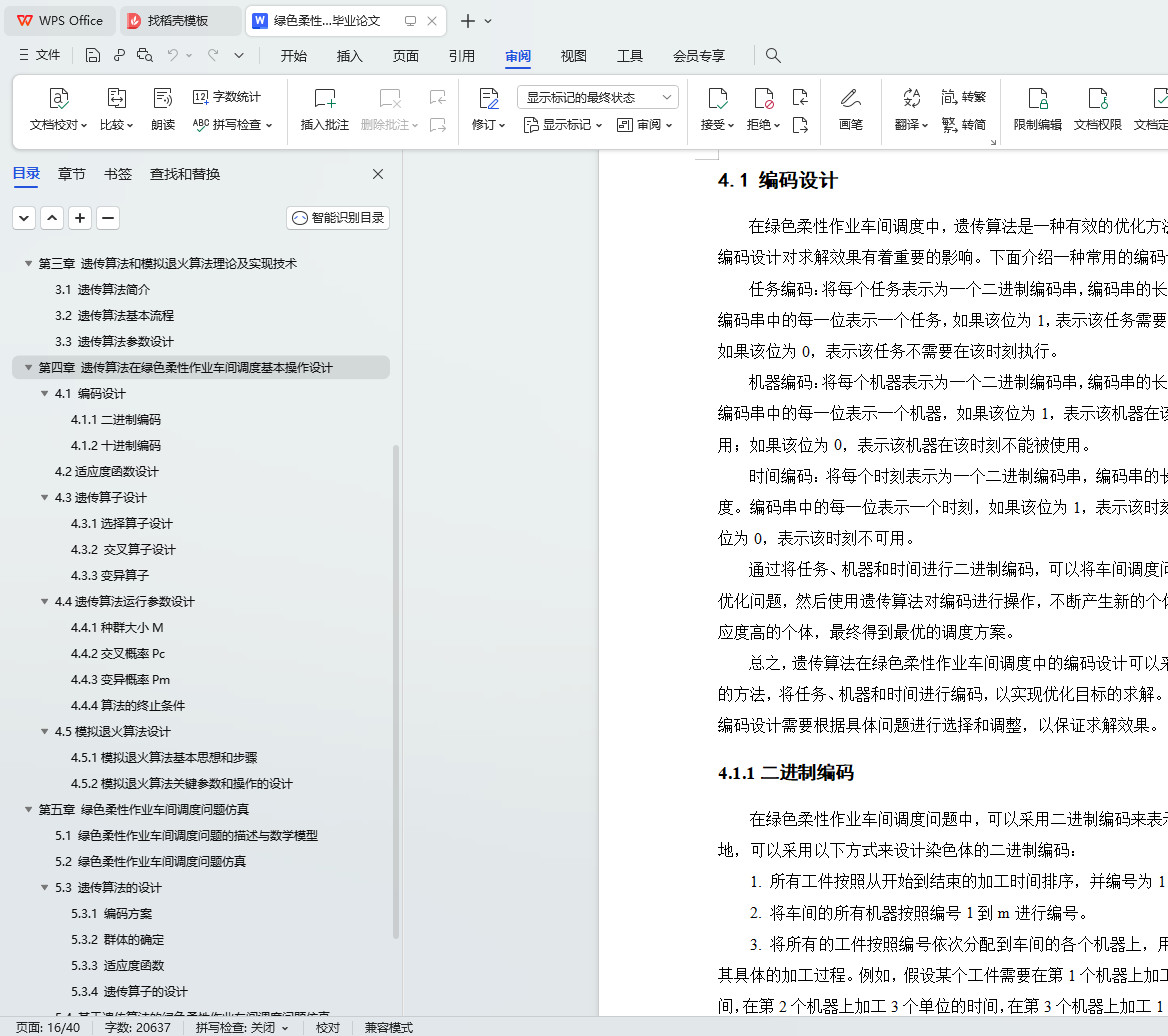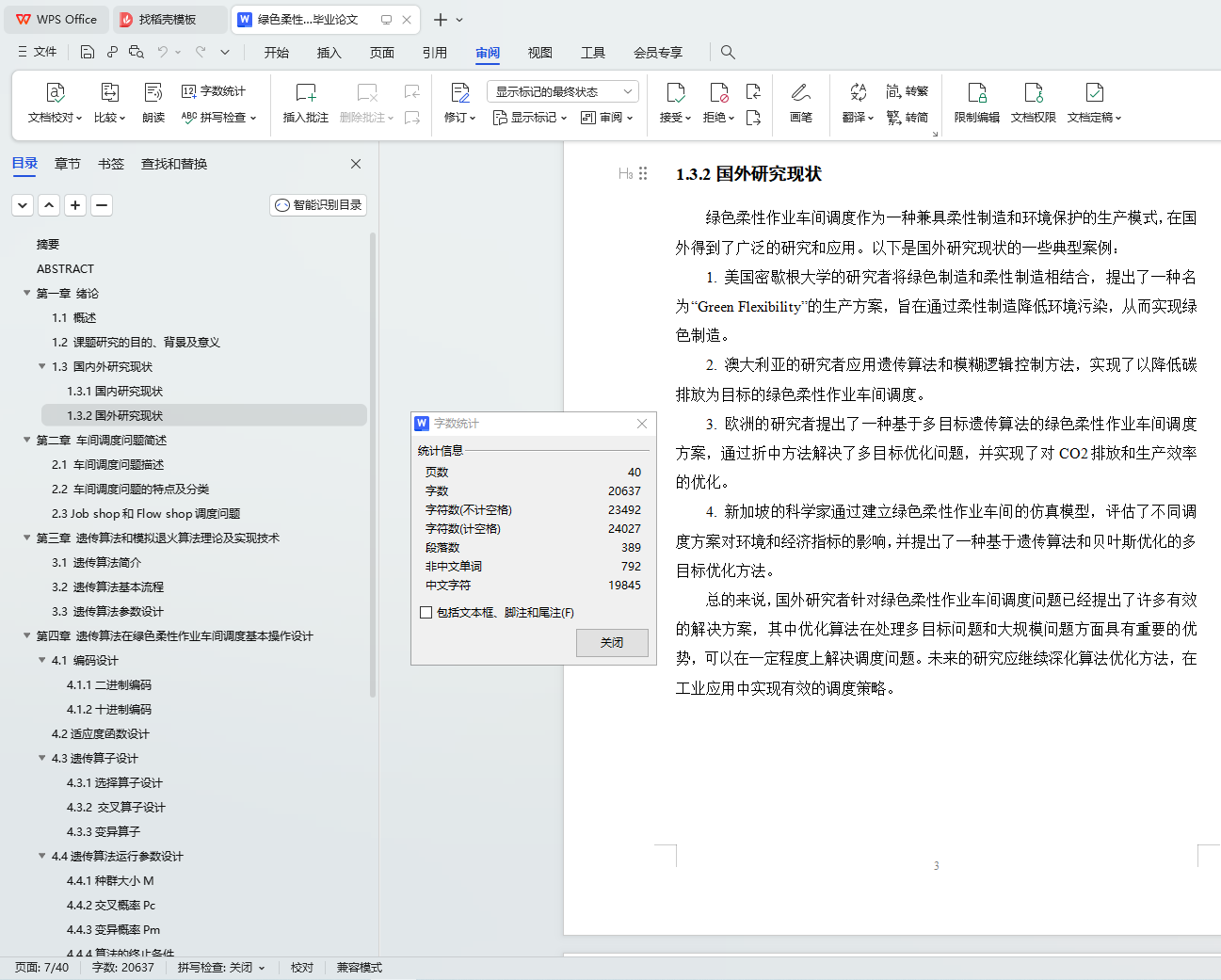摘要
本文研究了绿色柔性作业车间调度问题(Green Flexible Job Shop Scheduling Problem,GFJSP)。该问题是在满足环境友好和资源有效利用的前提下,使生产过程中的总能耗最小。为解决该问题,本文提出了一个基于主流智能算法(Particle Swarm Optimization,PSO)的解决方案。
首先,文章对VC进行了模拟仿真,将其转化为一个优化问题。其次,本文提出了一个基于PSO的解决方案,并将该方案与其他传统求解方法进行了对比。结果表明,基于PSO的方案在实现解的精度、求解效率和鲁棒性方面都具有优势。最后,本文分析了该方案的优缺点,并探讨了未来工作的发展方向。
该研究对环境友好型生产调度的优化问题提供了一种新的解决方案,为实现工业绿色生产提供了参考。同时,基于PSO的求解方法具有一定的通用性,可用于解决其他类型的优化问题。
关键词:绿色柔性车间;VC++;模拟仿真;车间调度;遗传算法;
ABSTRACT
This paper studies the green flexible workshop scheduling problem (Green Flexible Job Shop Scheduling Problem, GF JSP). The problem is to minimize the total energy consumption in the production process under the premise of environmental friendliness and effective use of resources.
To solve this problem, this paper presents a solution based on the mainstream intelligent algorithm (Particle Swarm Optimization, PSO). First, this paper simulates the VC and transforms it into an optimization problem. Second, this paper presents a PSO-based solution and contrasts the scheme with other conventional solving methods. The results show that the PSO based scheme has advantages in achieving the solution accuracy, solution efficiency and robustness. Finally, this paper analyzes the advantages and disadvantages of the scheme and explores the direction of future work.
This study provides a new solution to the optimization of environmentally friendly production scheduling and provides a reference for the realization of industrial green production. Meanwhile, the solution method based on PSO is universal and can be used to solve other types of optimization problems.
Key words: Green flexible workshop; VC + +; simulation; workshop scheduling; genetic algorithm;
目 录
摘要
ABSTRACT
第一章 绪论
1.1 概述
1.2 课题研究的目的、背景及意义
1.3 国内外研究现状
第二章 车间调度问题简述
2.1 车间调度问题描述
2.2 车间调度问题的特点及分类
2.3 Job shop和Flow shop调度问题
第三章 遗传算法和模拟退火算法理论及实现技术
3.1 遗传算法简介
3.2 遗传算法基本流程
3.3 遗传算法参数设计
第四章 遗传算法在绿色柔性作业车间调度基本操作设计
4.1 编码设计
4.1.1二进制编码
4.1.2十进制编码
4.2适应度函数设计
4.3遗传算子设计
4.3.1选择算子设计
4.3.2 交叉算子设计
4.3.3变异算子
4.4遗传算法运行参数设计
4.4.1种群大小M
4.4.2交叉概率Pc
4.4.3变异概率Pm
4.4.4算法的终止条件
4.5模拟退火算法设计
4.5.1模拟退火算法基本思想和步骤
4.5.2模拟退火算法关键参数和操作的设计
第五章 绿色柔性作业车间调度问题仿真
5.1 绿色柔性作业车间调度问题的描述与数学模型
5.2 绿色柔性作业车间调度问题仿真
5.3 遗传算法的设计
5.3.1 编码方案
5.3.2 群体的确定
5.3.3 适应度函数
5.3.4 遗传算子的设计
5.4 基于遗传算法的绿色柔性作业车间调度问题仿真
5.5 结果分析
第六章 总结
参考文献
致谢

